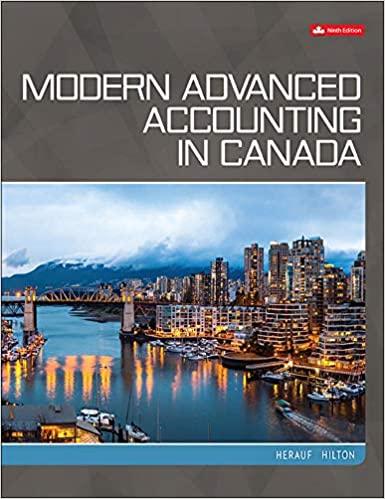question 1
MANAGEMENT ACCOUNTING II CAT 2. 16.06.2020. Question 1 Walfarm Limited is a company in the poultry industry. Over the past year the output capacity of the firm has increased to 3,000 birds per month. The company owner Walter Opondo asked the farm manager why despite increased production he is yet to own a Land cruiser like other business owners in this field. In his analysis the farm manager must be colluding with suppliers and buyers to steal from him. His friend Mr. Mwalya who lectures in Strathmore University advised him to seek an external auditor to check the books. An analysis of the books revealed that the company was spending 70% of all the revenues collected on animal feeds. The consulting arm of the external audit firm recommended that Walfarm Limited should find a cheaper source of poultry feeds or produce their own feeds. The farm manager was against the idea of sourcing for cheaper feeds citing that it would lead to stunted growth, increased mortality and longer terms to maturity. Mr. Walter then took a trip to Uganda to uncover how they were able to not only produce eggs, but chicken meat cheaply. He came back with a 2 million shilling feed mill and a schedule of production. Kuroiler Chicken Mature after four months. The schedule received from a Ugandan farmer is in line with this maturity period. Schedule for 500 birds Chick Mash Growers Mash Finisher Month 1 500 kg Month 2 750 kg Month 3 Month 4 1,250 1,500 A bird requires different protein levels during its life cycle, ranging from 18% - 23% The feed formula is as follows for a 100 kgs bag. Whole Maize Fish meal Sunflower Rice barn Chick Mash 55 kgs 15 kgs 10 kgs 20 kgs 100 kgs Growers Mash 55 15 15 15 100 kgs Finisher 60 20 10 10 100 kgs The following were the prices per kilogram of the feed components during the period. Whole Maize Fish Meal Sunflower Rice Barn June KES 40 KES 25 KES 45 KES 15 July KES 45 KES 20 KES 50 KES 15 August KES 40 KES 25 KES 55 KES 15 September KES 35 KES 30 KES 50 KES 15 October KES 30 KES 35 KES 40 KES 15 The budget was drawn in June and feed production started in July. The farm manager decided to buy the components required for production in the respective month of production. During production, the farm manager realized that due to wastage and the unavailability of some of the components as and when required, the usage during the period was as follows for production of 100 kgs bag of poultry feed. Whole Maize Fish meal Sunflower Rice barn Chick Mash 50 kgs 15 kgs 15 kgs 30 kgs 110 kgs Growers Mash 60 20 15 15 110 kgs Finisher 60 20 10 20 110 kgs a) Jasmine, Manvir and Austin who are interns at the firm have been tasked to conduct a variance analysis and advice the Farm manager on how to manage costs. (10 marks) Question 2 Mr. Abdalla Omar has conducted research and is convinced that during the COVID-19 pandemic there is reduced supply of fish in Kenya. The local demand stands at 220,000 tonnes while the local production stood at 167,000 tonnes. With the current uncertainty in international logistics, most fish mongers resorted to local supply this in turn has pushed prices even higher. This is a splendid opportunity. Mr. Omar has decided to open a fish production plant. The fisheries department at University of Eldoret has given him three different alternatives. Cost Installation Consultation fees Annual Maintenance fee Totals Small Plant 700,000 50,000 100,000 150,000 1,000,000 Medium Plant 2,500,000 100,000 200,000 350,000 3,150,000 Large Plant 7,000,000 200,000 500,000 800,000 8,500,000 He has submitted a proposal to the Kenya Climate Change organization and they have agreed to finance the project. Undecided about the best alternative, He has sent the following information to his class whatsapp group to seek their opinion. Additional Information a) The production capacity of the small plant is 1,000 kilograms per month, medium plant 2,500 kilograms per month and the large plant 10,000 kilograms per month. b) In the first 2 years there is 30 % he will sell to fish mongers, 10 % chance he will sell to hotels and 60% chance he will sell to households. c) When the situation resolves, there is 20 % chance he will sell to fish mongers, 50 % chance he will sell to hotels and 30 % chance he will sell to households. d) The prices for are: Kshs 250 per kilogram for fish mongers, Kshs 300 per kilogram for hotels and Kshs 350 per kilogram for households. e) If he starts with a small plant he has the option of upgrading to a medium plant after the first 2 years at the cost of Kshs 2,500,000 or upgrading to a large plant at a cost of Kshs 7,800,000. f) If he starts with a medium plant he has the option of upgrading to a large plant after the first 2 years at a cost of Kshs 6,000,000 g) The projected sales for the first 2 years is 20,000 kilograms annually, the projected sales for the rest of the project life is 50,000 kilograms annually. h) The average feeding cost per Kilogram of fish to maturity is Kshs 170. i) The useful life of the plant is 10 years. As a classmate, what is your response in the whatsapp group? (10 marks)







